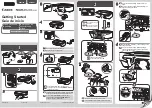
SD Series Installation and Administrator’s Guide
55
Change
settings
as
needed,
and
then
click
Set
Current
to
apply
changes.
•
CustomCharHigh
—Specify
the
numeric
value
of
the
highest
ASCII
character
supported
for
input
data
on
the
track.
•
CustomCharLength
—Set
the
number
of
bits
to
represent
one
character
of
data
on
the
track,
also
called
bits
per
character.
•
CustomCharLow
—Specify
the
numeric
value
of
the
lowest
ASCII
character
supported
for
input
data
on
the
track.
•
CustomCharMask
—Specify
the
mask
value
that
is
subtracted
from
the
ASCII
numeric
value
to
get
the
encoded
value.
•
CustomCharMax
—Specify
the
maximum
number
of
data
characters
for
the
track.
The
value
does
not
include
the
start
sentinel
or
end
sentinel.
•
CustomDensity
—Specify
the
number
of
data
bits
per
inch
of
magnetic
stripe
media
for
the
track,
also
called
bits
per
inch
or
bpi.
Allowed
values
are
75
bpi
or
210
bpi.
•
CustomEndSentinel
—Specify
the
last
character
encoded,
which
identifies
the
end
of
encoded
data
for
the
track.
•
CustomLrc
—Specify
a
cumulative
parity
bit
that
is
encoded
after
the
end
sentinel
to
provide
simple
error
checking.
•
CustomParity
—Specify
a
character
‐
level
parity
bit
encoded
after
each
character
to
provide
simple
error
checking.
•
CustomSdsNulls
—Specify
the
number
of
nulls
between
each
copy
of
the
data
record.
You
should
not
change
this
value.
•
CustomSdsRecords
—Specify
the
number
of
times
to
encode
the
data
record.
You
should
not
change
this
value.
•
CustomSdsSs
—Specify
the
number
of
start
sentinels
before
each
data
record.
You
should
not
change
this
value.
•
CustomStartSentinel
—Specify
the
first
character
encoded,
which
identifies
the
start
of
the
encoded
data
for
the
track.
Summary of Contents for SD260
Page 4: ...iv...
Page 38: ...30 Elements of Card Design...
Page 100: ...92 Supplies and Parts...
Page 116: ...A 16 SD460 Laminating System...
















































